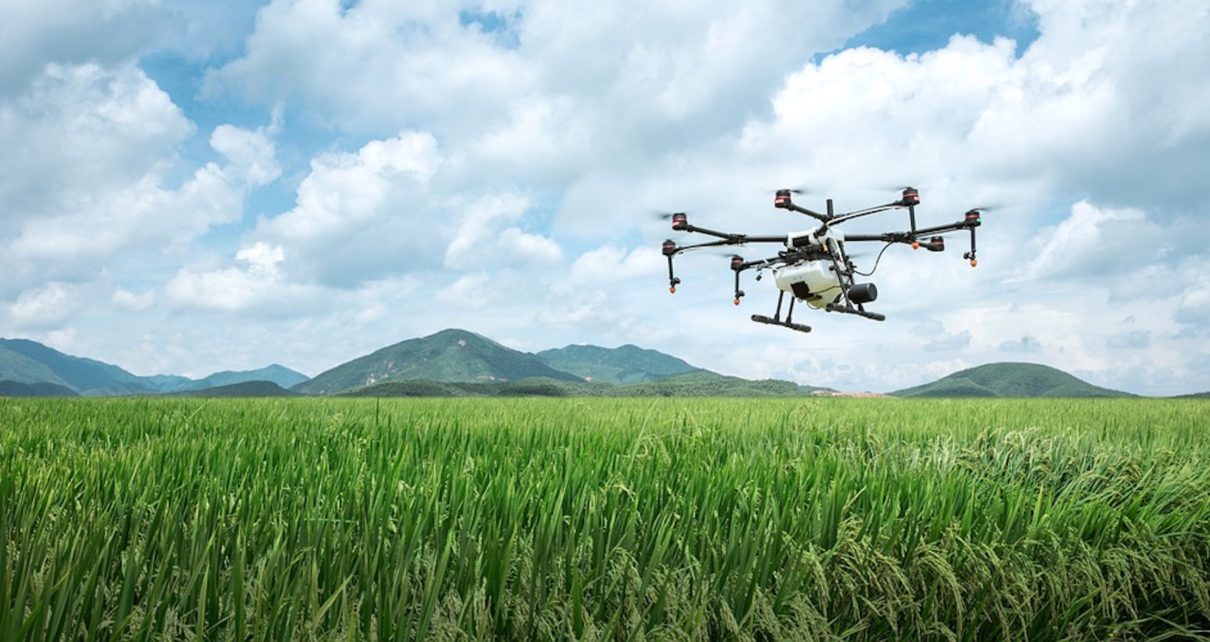A Sustainable Agricultural Approach
Canada’s population increased by over 5% from 2016 to 2021, and it is expected to continue growing. Canada must ensure its agricultural sector is resilient, innovative, and sustainable enough to feed a growing population, and competitive enough to remain a top food exporter.
Many countries, including Canada, are currently experiencing serious challenges to their agricultural sectors, leading to shortfalls in crop yields. These are not accounted for by COVID-related disruptions. Rather, these challenges range from a reduction in the overall amount of arable land available for crop cultivation, shortage of nutrients, soil organic matter, micronutrients, water resources, ineffective fertilizer use, leaching and increases in soil salinity, all of which are compounded by climate change.
Successfully addressing these challenges in a strategic and systematic way will require a shift towards concepts like precision farming, regenerative agriculture, and sustainable intensification, combined with the adoption of digital technologies of scale across farms.
Incorporating these methods into farming practices will also help Canada meet its climate change commitments and ensure a secure supply of food for a growing global population; it won’t have to sacrifice one objective to achieve the other.
Instead of focusing on the partnerships, and financial and operational support that Canadian farmers require to adopt innovative farming practices of scale, the federal government has seemingly chosen to meet its climate emission targets by focusing almost solely on regulation.
For example, the Trudeau government’s recent decision to set a 30% reduction target in national fertilizer emissions by 2030 is disconnected from realities on Canadian farms and sets a poor precedent for future partnerships between the government and agricultural ecosystem stakeholders in Canada.
Currently, the target is considered a voluntary one, although the government’s lack of clarity when initially communicating this policy created confusion for stakeholders. Trudeau’s government should have consulted their representatives earlier in the policymaking process about specific emission targets.
Instead, Trudeau’s government refused to discuss the topic with provincial agricultural ministers last month, and in a peremptory, bureaucratic fashion decreed a 30% cut in fertilizer emissions, which elicited significant concern and consternation.
It is worth noting that similar policy decisions by the Dutch government have triggered widespread protest samong Dutch farmers. Canadian farmers have already called on Ottawa to increase funding for sustainable agriculture practices and have warned of the risks such a cut could create, from food shortages to economic losses.
Given the challenges facing Canada’s agriculture sector, it is important to measure success by metrics like improved water use, increased fertilizer and pesticide efficiency, less energy consumption, and carbon sequestration.
How Canada chooses to improve these metrics while meeting carbon emission targets will determine the efficiency and global competitiveness of its farming industry in the next decades.
Supporting pilots and projects, like Alberta Innovates, which aim to bridge smart technologies and farming operations, can ultimately unlock billions of dollars of value for the Canadian economy.
Overall, it is important to acknowledge that government regulation is a necessary but insufficient tool for Canada to transform its agricultural sector and maximize the output and efficiency of crop production efforts.
Technology in Canadian Agriculture
Canadian farmers are already some of the most sustainable and tech-savvy farmers in the world, and Canada ranks higher than the OECD average for many markers related to sustainable agriculture.
Economically, Canadian farmers are already incentivized to adopt more sustainable practices in the absence of mandated government targets by maximizing their outputs like crop yield and minimizing inputs such as fertilizer.
Average fertilizer costs for the Canadian farmer have now reached around $135 CAD per acre and Canada’s current nitrogen use efficiency means around $54 worth of fertilizer is consequently lost or wasted in the application process per acre of land.
Canada’s overall nitrogen use efficiency (59.5%) has also been increasing (when compared to other OECD countries) and demonstrates that significant economic benefits are sufficient incentives for Canadian farmers to improve their practices.
Countries that combine innovative concepts like precision farming with advanced technologies like nanoparticles and sensors will accordingly enhance the competitiveness of their agricultural sector.
If Canadian farmers can capture and leverage the large quantity of valuable data that farms generate, they will be able to monitor, analyze, and react to changes in farming conditions close to real time.
For example, on today’s farms, less than half of the nitrogen in applied fertilizers is absorbed by crops for growth. On average, over half is lost to the environment as harmful waste. Up to 90% of phosphorus and potassium can also be wasted during the application process, with farmers and society bearing its economic and environmental consequences.
By adopting nanoparticle technology (together with nano sensors to measure changes) in current farming practices, Canadian farmers can improve their nitrogen-use efficiency. This helps make farming practices more sustainable and allows farmers to maximize their use of inputs (including energy resources and water) while minimizing waste products (like nitrogen fertilizers).
Maximizing the efficiency of current inputs will also result in an absolute reduction in fertilizer use or other inputs because farmers will obtain the same output with fewer inputs.
Farms that use nano pesticide and herbicide particles will benefit from the greater bioavailability of these products because they are far more efficient than current water-soluble fertilizers that also rely on a costly delivery system which nanoparticles do not need. Nanoparticles will allow crops to absorb nearly 100% of their nutrient inputs at scale.
Another potential application of nano technology to generate agricultural efficiencies exists with nano genetics. Nano genetics involves controlling plant genes to affect factors like the growth season, yield, and even the colour of the plant.
Nano technology can consequently help achieve emission targets by creating significant emission reductions in a given unit of existing land area. This obviates the need to focus on absolute reductions. Canada’s forestry sector is already exploring nanotechnologies and their various applications (to improve wood treatments for example) and its agricultural sector should follow suit.
However, applying innovative technological practices to maximize the output of existing agricultural processes is insufficient to address the larger systemic issue of Canadian and global food security.
A much larger evaluation and overhaul of our existing agricultural practices will be required to shift towards regenerative farming practices that improve factors like water quality and land productivity by focusing on soil health and carbon sequestration.
No unanimously-held definition of regenerative agriculture exists, but it clearly centers around a system of principles and practices that increase biodiversity, enrich soils, improve watersheds, and advocates estimate that regenerative farming practices could reduce up to 22 gigatons of CO2 by 2050.
Ultimately, food production and reduced emission targets do not have to be conflicting objectives. With innovative, tech-based agricultural approaches they can be complimentary.
Forging the right federal, provincial, and municipal partnerships that provide farms with the funding and operational support required to achieve climate emission targets will make Canada a leader in sustainable agricultural practices this century.
Cover Image: “Uav Agriculture Farming Plant Protection Drone Dji” by Canon EOS via Maxpixel. Licensed under CC 0 1.0 (C1.0).
Disclaimer: Any views or opinions expressed in articles are solely those of the authors and do not necessarily represent the views of the NATO Association of Canada.




